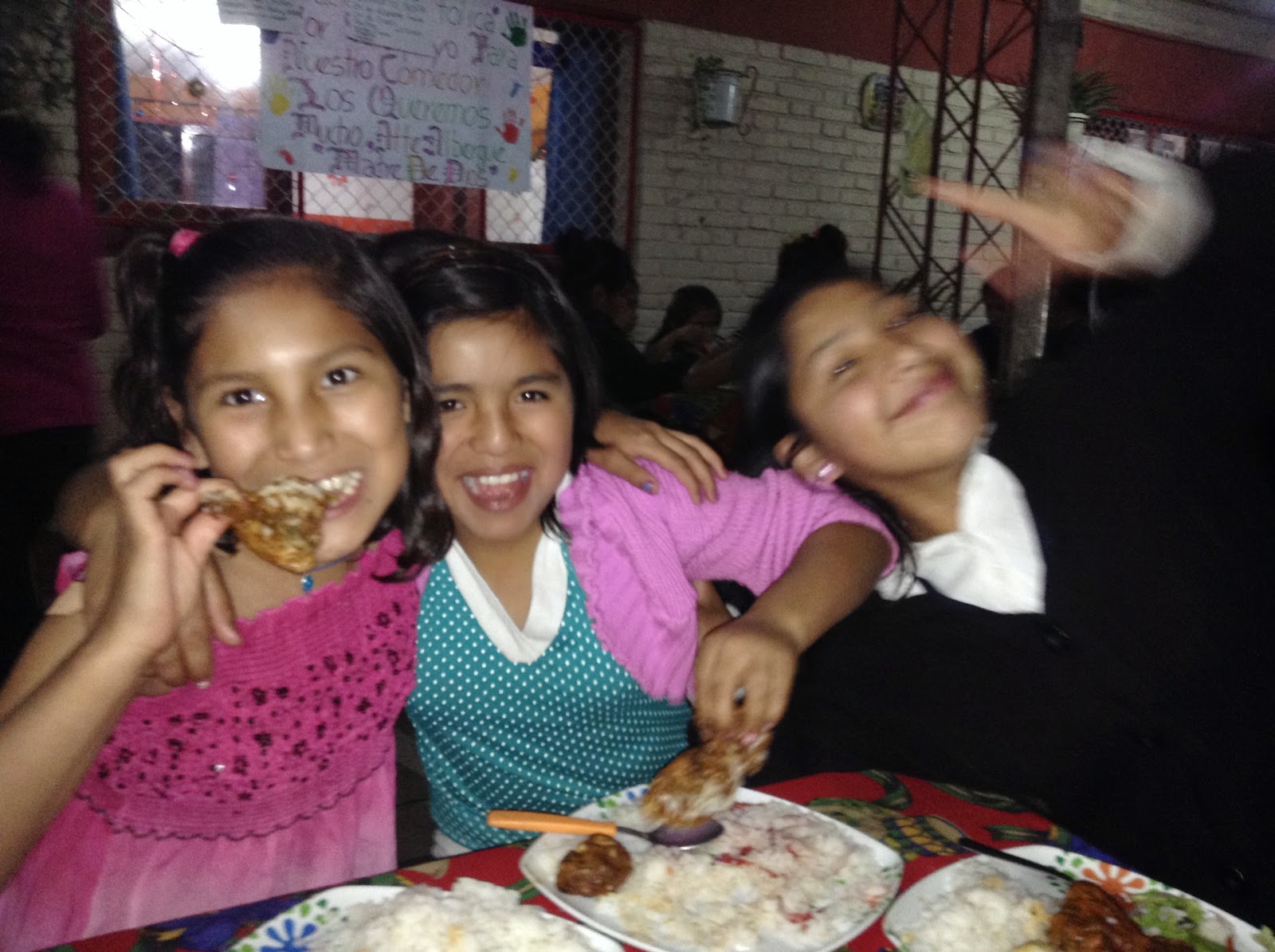As could be expected, Christmas in Bolivia was an adventure. It had lots of great moments - a beautiful mass with the kids at the orphanage, a lovely dinner with the other volunteers in my program, sunny summer weather, the chance to participate in new Christmas traditions. It was sad being away from my family and so many things I take for granted in the holiday season: snow, hearing Christmas songs 24-7, the TV marathon of "A Christmas Story," candy canes and candy-cane flavored everything, "A Charlie Brown Christmas" on VHS... But I'm glad I got to experience a South American Christmas at least once, and who better to spend it with than the lovable girls I work with?
To give you a sense of it, here are a few of the moments and images that stuck out:
The Music
 |
| Our band for Christmas mass |
On Christmas Eve, though, the girls spent the day blasting a CD of "villancicos," and we got to hear their favorites over and over. One of them, about the bells of Bethlehem ringing, was pretty catchy (at least the first ten times). You can listen to it here: https://m.youtube.com/watch?v=DyRFHeNMoXA
 |
| I don't have a picture of the Nativity fish, but here's a shot of the girls dancing in the little pagent they had before dinner. |
 |
| The suit must get awfully warm down here |
And, yes - they do listen to "Feliz Navidad" here. It's quite popular - both the bilingual version we know and love in the US, as well as a version totally in Spanish.
The Weather
It's summer here and, although it rains a lot, the 24th and 25th were beautiful, sunny days, with highs in the 80s. I didn't need a sweater to go outside (unthinkable for a Minnesotan), and we even took a trip to the park on Christmas afternoon!
The Food
| Why, Bolivia? |
 |
| Can you see the foot? So gross |
On Christmas night, my roommates and I hosted a dinner for the four volunteers in our program: one German, one British, one Irish, and one American. We ended up making lasagna, German red cabbage, green beans, and chocolate cheesecake - kind of eclectic, but really good!
Sponsored Christmas Presents
 |
| A Canadian church group knitted these cute hats |
Most of the visitors, however, were businesses using it as a publicity opportunity. I had mixed feelings about it. On the one hand, I'm glad so many people were thinking about the girls, and it is nice that they got presents that they wouldn't have otherwise, and if the business took a few pictures, that doesn't seem to hurt anyone. On the other hand, some companies seemed to be much more generous, and much less selfishly motivated, than others.
 |
| Even Pepe the dog loved it! |
One of the local colleges was also great - they put on a long show for the kids from four of the Amanecer orphanages. A host and Mrs. Claus sang and led games, and Santa made an appearance at the end. (Although, one of the 14-year-old girls, miffed, complained to one of the orphanage workers after, "That wasn't the real Santa! That was the guy who was playing music at the beginning. You told me the real Santa would be there!") At the end, they handed out board games and Frozen Barbies.
 |
| Also, the bank gave some of the girls these creepy dolls with red light-up ears |
I don't mean to complain about the donations in general - of course, it's a nice thing for people and companies to do in general. It's just that, by the end, I couldn't help wishing that someone would give the girls something out of genuine love.
Christmas Eve Mass
 |
| The girls' side |
We sang Christmas carols, lit the Advent wreath and a new white candle, got sprinkled with holy water with a fake flower and a plastic pitcher, and blessed the baby Jesus statue before putting him in the manger scene under the tree. The boys had brought their baby Jesus statue to get it blessed, too - apparently, lots of people here bring their baby Jesuses to Christmas mass to get them blessed before putting them in their home nativity scenes.













































